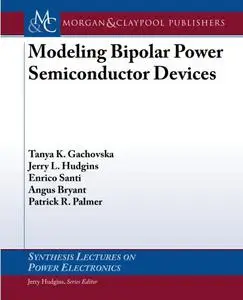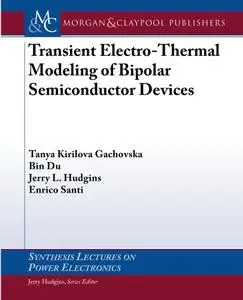Modeling Bipolar Power Semiconductor Devices by Tanya K. Gachovska
English | PDF | 2013 | 95 Pages | ISBN : 162705121X | 1.4 MB
This book presents physics-based models of bipolar power semiconductor devices and their implementation in MATLAB and Simulink. The devices are subdivided into different regions, and the operation in each region, along with the interactions at the interfaces which are analyzed using basic semiconductor physics equations that govern their behavior. The Fourier series solution is used to solve the ambipolar diffusion equation in the lightly doped drift region of the devices. In addition to the external electrical characteristics, internal physical and electrical information, such as the junction voltages and the carrier distribution in different regions of the device, can be obtained using the models.



